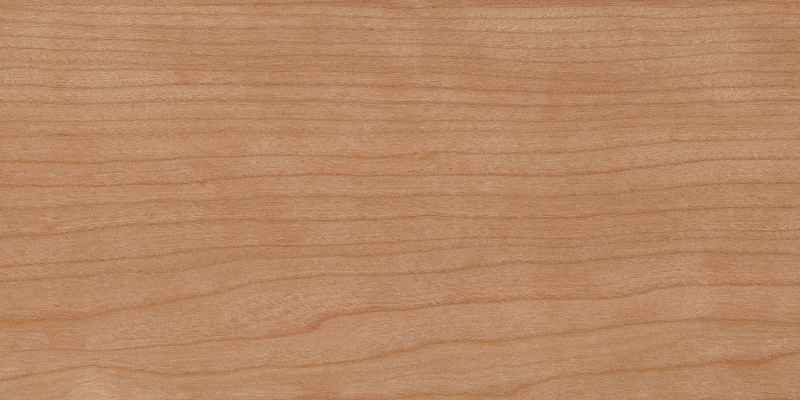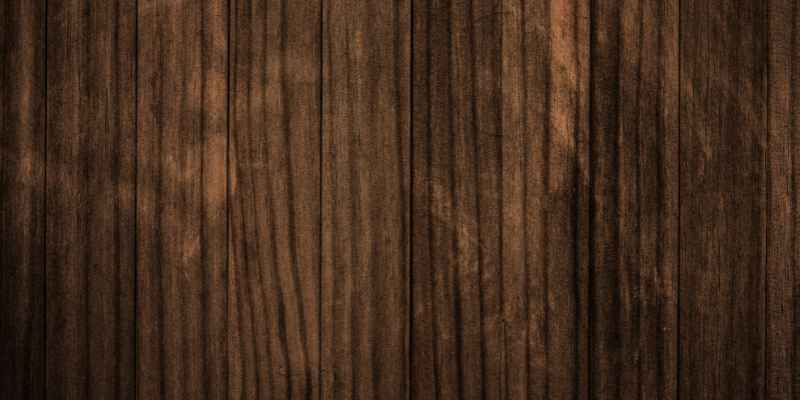Cherry wood does darken over time as it is exposed to sunlight and air, shifting from a light salmon color to a deep, rich reddish-brown. This transformation can occur in as little as six months and is caused by oxidation and UV exposure, which alters the wood’s molecular makeup and changes how light is reflected, giving cherry its characteristic hue.
Over the course of a year, cherry wood will darken significantly if exposed to light, becoming nearly as dark as walnut. However, after the first year, the wood’s darkening process slows down, and it does not get much darker.
Why Cherry Wood Darkens
Cherry wood naturally darkens over time due to exposure to sunlight and air. The wood undergoes a color transformation, shifting from a light salmon to a deep, rich reddish-brown as its molecular makeup changes through oxidation and UV exposure. This process begins in as little as six months, ultimately giving cherry wood its distinct and beautiful hue.
Oxidation Process
As cherry wood is exposed to light and air, it undergoes an oxidation process, causing it to darken over time. This natural oxidation occurs due to the chemical reactions happening within the wood’s molecular structure. Oxygen molecules interact with the wood fibers, leading to a change in color and tone.
During the oxidation process, the cherry wood’s light salmon hue gradually transforms into a deep, rich reddish-brown. This change begins to occur in as little as six months after the wood is exposed to sunlight and air. It is a slow but beautiful transformation that enhances the wood’s natural beauty.
Uv Exposure Impact
UV exposure plays a significant role in the darkening of cherry wood. Ultraviolet rays from the sun penetrate the wood’s surface and interact with its molecules. Over time, these UV rays cause a chemical reaction that alters the way light is reflected by the wood.
The UV exposure changes the molecular makeup of the cherry wood, leading to a shift in its hue. The wood absorbs some of the UV rays, while others are reflected or scattered. This absorption and reflection of light give cherry wood its distinctive, rich color.
To expedite the darkening process, some woodworkers intentionally expose cherry wood projects to direct sunlight. However, it is essential to note that prolonged exposure to harsh weather conditions should be avoided. Regularly turning the project ensures even exposure to sunlight, resulting in a more consistent and uniform darkening effect.
In conclusion, cherry wood darkens over time due to the natural processes of oxidation and UV exposure. These factors contribute to the wood’s transformation from a light salmon shade to a deep, reddish-brown. The darkening process enhances the wood’s beauty, making it a sought-after choice for furniture, flooring, and decorative accents.

Color Transformation Journey
Cherry wood does darken over time due to oxidation and exposure to sunlight. In as little as six months, it shifts from a light salmon color to a deep, rich reddish-brown hue, becoming nearly as dark as walnut within a year.
Light Salmon To Deep Reddish-brown
Cherry wood undergoes a remarkable journey in color transformation. Initially, it presents with a light salmon tint, which gradually deepens into a rich reddish-brown over time. This evolution is a result of the wood’s reaction to environmental factors, making it a fascinating natural process to witness.
Speeding Up The Darkening Process
If you desire to expedite the darkening process of cherry wood, placing the wood in direct sunlight for several days can significantly accelerate the transformation. However, ensure that the wood is not exposed to harsh weather conditions during this period. Regularly rotating the wood will guarantee even exposure, facilitating a quicker and more uniform darkening of the cherry wood.
Understanding Cherry Wood Aging
Cherry wood darkens over time, starting from light salmon to deep reddish-brown with exposure to sunlight and air. The transformation occurs through oxidation and UV exposure, altering the wood’s molecular makeup for its distinct rich hue.
Initial Color State
Cherry wood starts as a light salmon shade and shifts to a rich reddish-brown over time due to oxidation and UV exposure. This color transformation begins in as little as six months, giving it a recognizably rich hue.
Yearly Darkening Cap
Freshly milled cherry wood is nearly as light as maple and darkens over the course of a year when exposed to light, reaching a hue similar to walnut. However, after the first year, its darkening process slows down considerably.
As cherry wood ages, it naturally transitions to a deep, reddish-brown, enhancing its overall appearance. This transformation is influenced by exposure to natural elements such as light and air, resulting in a gradual darkening process.
Enhancing Cherry Wood Patina
Over time, cherry wood naturally deepens in color from light salmon to a rich reddish-brown hue due to oxidation and UV exposure. The transformation can start in as little as six months, resulting in the distinctive darkening patina that cherry wood is known for.

Best Practices For Aging
When it comes to enhancing the patina of cherry wood, there are a few best practices to keep in mind. These practices can help you achieve the desired deep, rich reddish-brown color over time.
1. Avoid Direct Sunlight: Exposing cherry wood to direct sunlight can accelerate the darkening process. However, prolonged exposure can also cause the wood to fade or develop uneven colors. It is best to place cherry wood furniture or items in a location where they receive indirect sunlight.
2. Control Humidity: Cherry wood responds to changes in humidity. Fluctuations in humidity levels can cause the wood to expand or contract, leading to cracks or warping. To maintain the wood’s integrity and prevent damage, it is crucial to keep the humidity levels stable in the environment where the cherry wood is placed.
3. Apply Protective Finishes: Applying a protective finish to cherry wood can help slow down the darkening process and maintain its natural beauty. Choose a high-quality finish specifically designed for cherry wood and follow the manufacturer’s instructions for application and maintenance.
Maintenance Tips
Proper maintenance plays a significant role in preserving the darkened patina and overall beauty of cherry wood. Here are some maintenance tips to keep in mind:
1. Regular Dusting: Dusting cherry wood regularly helps prevent the buildup of dirt and grime, which can dull the wood’s appearance. Use a soft, lint-free cloth or a feather duster to gently remove the dust.
2. Mild Cleaning: Occasionally, cherry wood may need more than just dusting. Use a mild, non-abrasive wood cleaner and a soft cloth to remove any stains or dirt. Avoid using harsh chemicals or abrasive cleaners, as they can damage the wood’s surface.
3. Periodic Polishing: Polishing cherry wood can help restore its luster and protect it from minor scratches. Choose a high-quality wood polish specifically designed for cherry wood and follow the manufacturer’s instructions for application.
4. Protect from Heat and Moisture: Cherry wood is sensitive to heat and moisture. Avoid placing hot objects directly on the wood surface and use coasters or placemats to protect it from spills and water rings.
Remember, proper maintenance and care are key to preserving the natural beauty and patina of cherry wood. By following these best practices and maintenance tips, you can enhance and maintain the darkening process, allowing your cherry wood to age gracefully over time.
Art Of Cherry Wood Finishing
Cherry wood is cherished for its elegant appeal and timeless beauty. One aspect that truly sets cherry wood apart is its ability to darken and develop a rich patina over time. Understanding the art of cherry wood finishing is crucial to maintain and enhance the natural allure of this exquisite wood.
Choosing The Right Finish
One critical aspect of cherry wood finishing is selecting the appropriate finish for your project. Different finishes can impact how cherry wood darkens over time. Oil-based finishes tend to enhance the wood’s natural beauty while water-based finishes may slow down the darkening process.
Effect Of Different Finishes
Various finishes can influence how cherry wood evolves in color. Tung oil and varnish may deepen the reddish tones of cherry wood, while lacquer could delay the darkening process. Wax finishes offer a soft sheen and protection, contributing to the overall charm of cherry wood.
Challenges Of Cherry Preservation
Cherry wood naturally darkens over time as it is exposed to sunlight and air, transforming from a light salmon color to a deep, rich reddish-brown. This process of oxidation and UV exposure gives cherry wood its distinctive and beautiful hue.
Avoiding Over-darkening
Balancing Sunlight Exposure
Cherry wood is a popular choice for furniture due to its natural beauty, but it poses challenges in preservation. Over time, cherry wood naturally darkens due to exposure to sunlight and air. To prevent over-darkening, it is essential to avoid prolonged exposure to direct sunlight that can accelerate the color-changing process. Additionally, balancing sunlight exposure and ensuring even distribution of light can help maintain the original color of cherry wood for a longer period.
When preserving cherry wood, limiting sunlight exposure is crucial to prevent rapid darkening. Rotate furniture periodically to ensure even UV exposure. Using window treatments or UV-protective coatings can help reduce the impact of sunlight on cherry wood.
Maintaining a consistent environment with controlled lighting conditions can slow down the natural darkening process. Regular maintenance and protective measures can help extend the lifespan of cherry wood furniture.
In conclusion, understanding the challenges of cherry wood preservation, specifically in regards to over-darkening, is essential for maintaining the original beauty of this wood type. Implementing strategies to avoid over-darkening and balancing sunlight exposure can help prolong the lifespan and aesthetics of cherry wood furniture.
Frequently Asked Questions On Does Cherry Wood Darken Over Time
How Long Does It Take For Cherry To Darken?
Cherry wood darkens in about six months when exposed to sunlight and air. Through oxidation and UV exposure, the molecular makeup changes and the wood shifts from light salmon to a deep reddish-brown. It may darken further over a year but won’t get much darker after that.
How Much Does Cherry Darken Over Time?
Cherry wood darkens over time when exposed to sunlight and air, transitioning from light salmon to rich reddish-brown. It starts within six months and continues gradually over the years, reaching its maximum darkness in about a year. UV exposure and oxidation play key roles in this natural transformation.
What Darkens Cherry Wood?
Cherry wood naturally darkens over time due to oxidation and UV exposure. In as little as six months, cherry wood can shift from a light salmon color to a deep, rich reddish-brown. The wood’s molecular makeup changes how light is reflected, resulting in its recognizable darker hue.
Does Cherry Wood Get Redder With Age?
Cherry wood darkens with age, shifting from light salmon to deep reddish-brown due to oxidation and UV exposure.
Conclusion
Cherry wood does darken over time. Through oxidation and exposure to UV light, cherry wood undergoes a color transformation, shifting from a light salmon color to a deep, rich reddish-brown. This process can begin as early as six months and continues to develop over the years.
So, if you have cherry wood furniture or flooring, expect it to become darker and more visually appealing as time goes by. Embrace the natural beauty and character that cherry wood develops with age.


